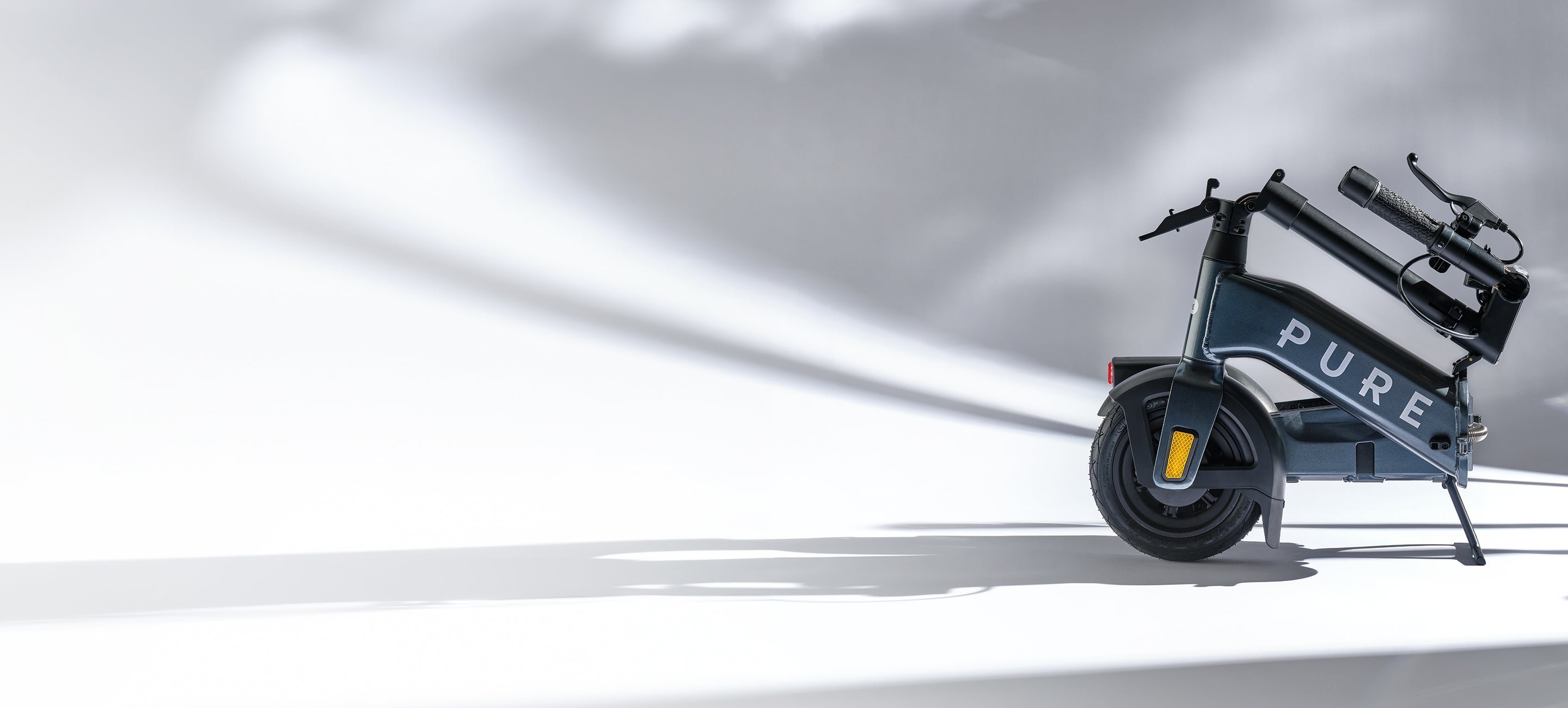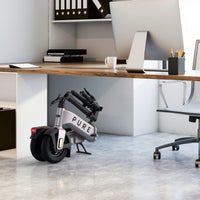
Maintenance Guide for your Electric Scooter
One of the best features about electric scooters is that they require little maintenance. However, there are a few things that will help keep your scooter running smoothly.
Our electric scooter maintenance guide below focuses on this and is split into the two key elements that make up an electric scooter - the battery and then everything else!
Electric scooter battery maintenanceThe battery on your electric scooter is probably the most important part. All of our scooters feature lithium-ion batteries which are high performance, low weight and physically much smaller than comparable lead-acid batteries of the past. Advances in battery technology mean that modern mobile batteries are able to provide better efficiency and longer lasting power than ever before.
All batteries, however, have a life-cycle and when you notice a decreased ability to provide lasting charges this means your battery’s life is coming to an end. However, we have the following advice to maximise the life of your electric scooter battery:
Don’t fully deplete the charge from the battery; keep it topped up to at around 90% and prevent overcharging from KERS (the scooter’s Kinetic Energy Recovery System, which converts your forward momentum to battery charge under breaking). For the longest lifespan, research shows it’s best to store your scooter at around 90% charge.
Most Li-Batteries have a lifecycle of 500-1000 charge cycles. A charge cycle involves taking the battery from 100%-0%-100% full. Keeping it topped up reduces the number of full cycles.
The daily operating temperature of the scooter will have an effect on its life. Extreme conditions outside of the manufacturers specifications may cause battery health to suffer adversely.
We highly recommend using only the official charger that was supplied with your scooter. Electric scooters’ batteries can be different in size and type, therefore, using chargers or electric starters from other scooters, older chargers or other types of charger may lead to overcharging, undercharging or improper charging. This could then lead to lasting damage to your e-scooter or even worse it could mean that your scooter won't start at all.
Looking after everything else!Away from the battery the rest of the electric scooter is in general made up of moving parts which over time will become susceptible to wear and tear. These moving parts are things such as wheels and tyres, brake pads and brake handles and the folding joints.
It is important to make some key checks before each time you set off, as well as after a certain number of kilometres:
Before Every Ride:
- Check tyre pressure
- Check wheels and handlebars turn smoothly
- Check any hinges for unexpected vibration or movement
- Look for any loosened nuts, bolts and fasteners
- Check lights and indicators function
Every 1 month, or every 300km, additionally:
- Check tyres for damage
- Check bell function
- Clean with damp cloth and inpspect for damage
- Check cables on product for signs of damage
- Check charger and cable for signs of damage
Every 6 months, or every 1,500km (Full safety check), additionally:
- Tighten bolts to stated torque
- Adjust brakes
- Clean with damp cloth and check for chassis & fork damage
Every year, or every 3,000km (Full service), additionally:
- Check headset and wheel bearings for damage; grease where appropriate
- Service all folding points, regrease where appropriate
A final word...
Understanding how to properly look after and maintain your electric scooter will not only ensure the best performance and safe operation but also help towards keeping it fit for use for many years.
Some of the above considerations need to be looked at more frequently than others and at the end of the day, you can’t check too often!
Although a good overview of electric scooter maintenance, this article is intended as a supplement to your owner’s manual and we would always recommend consulting that before performing any type of maintenance work as this will have important model-specific information.






